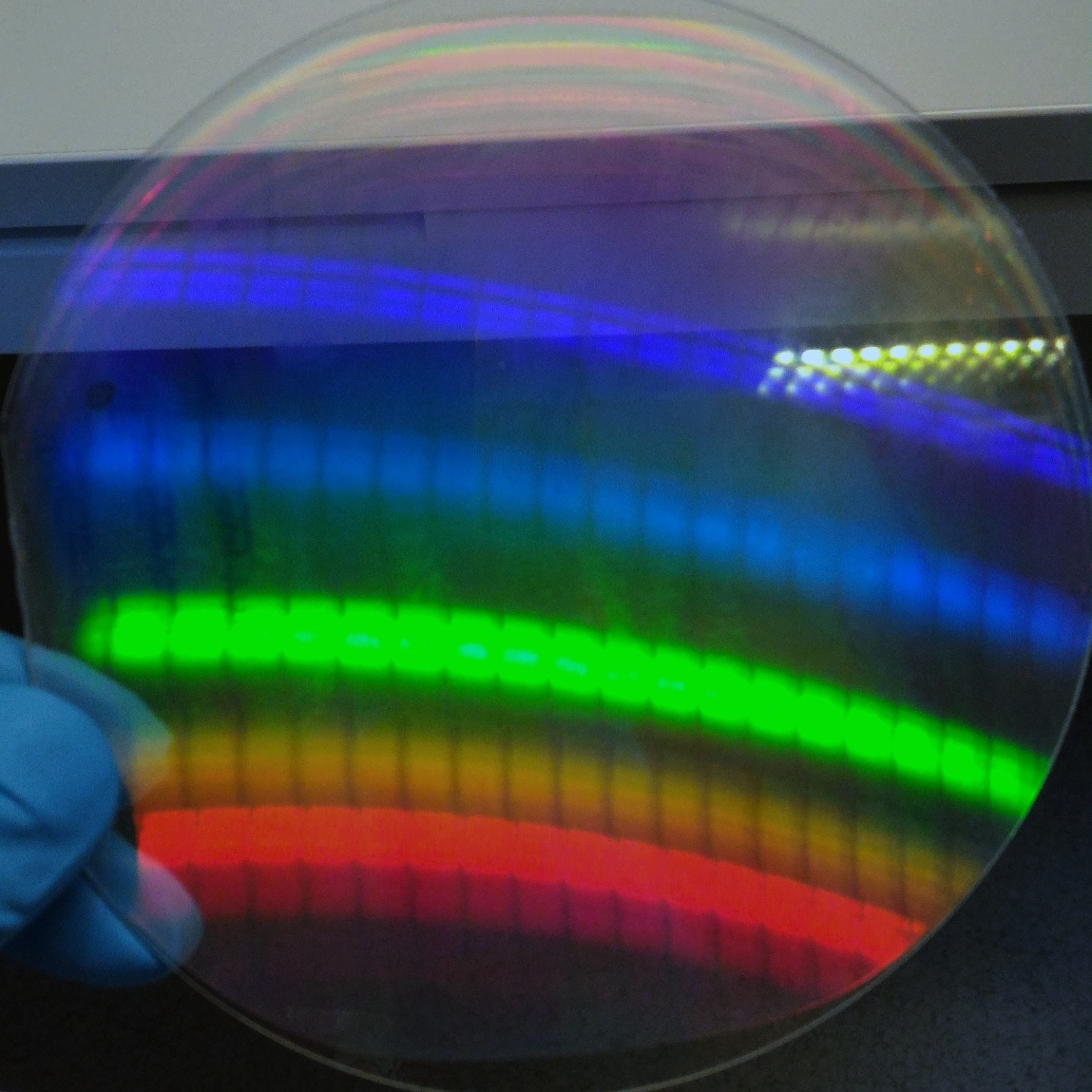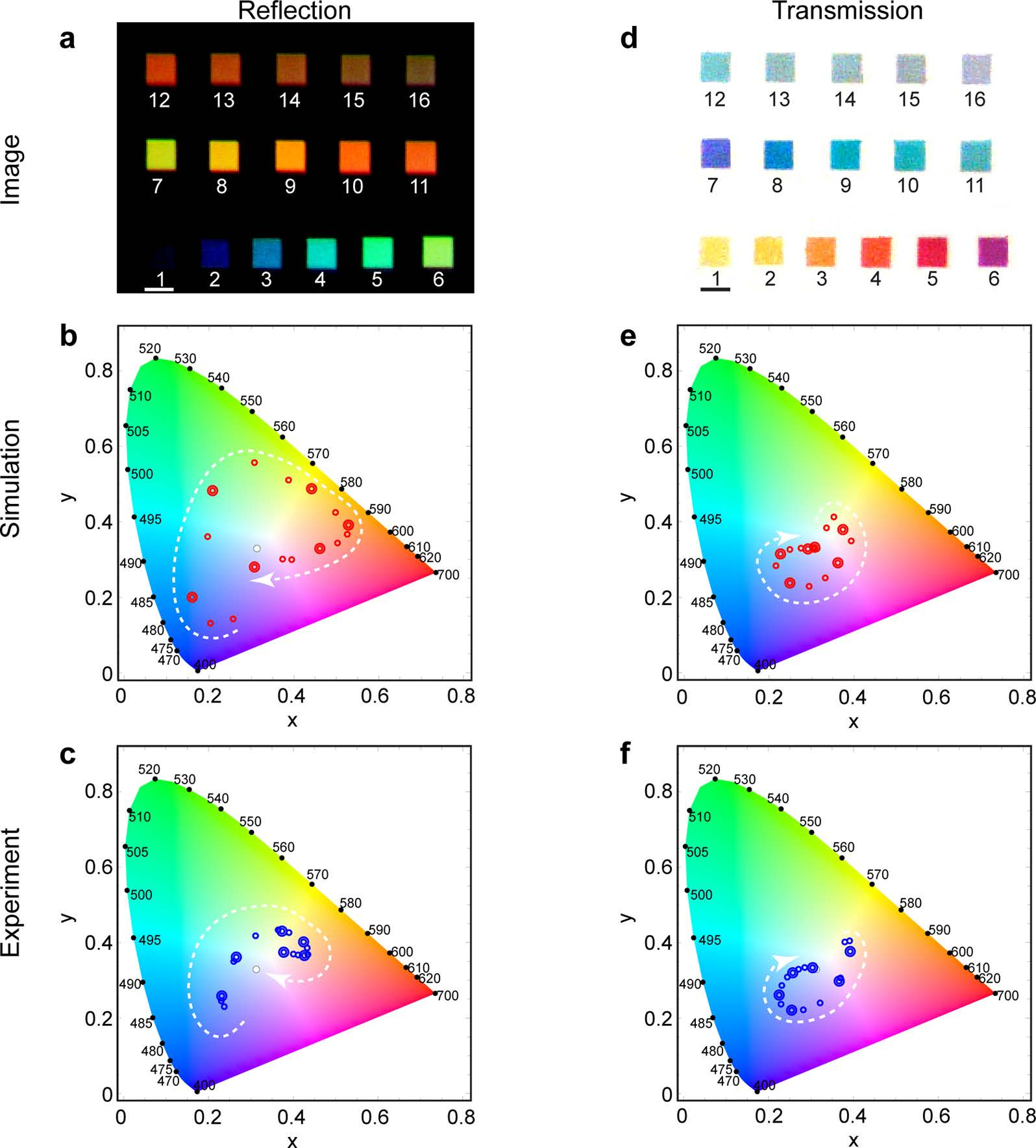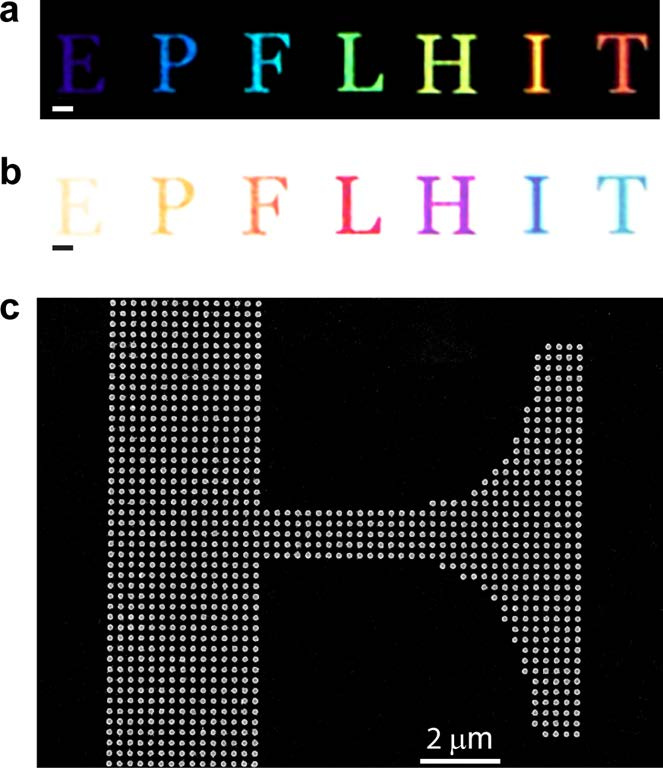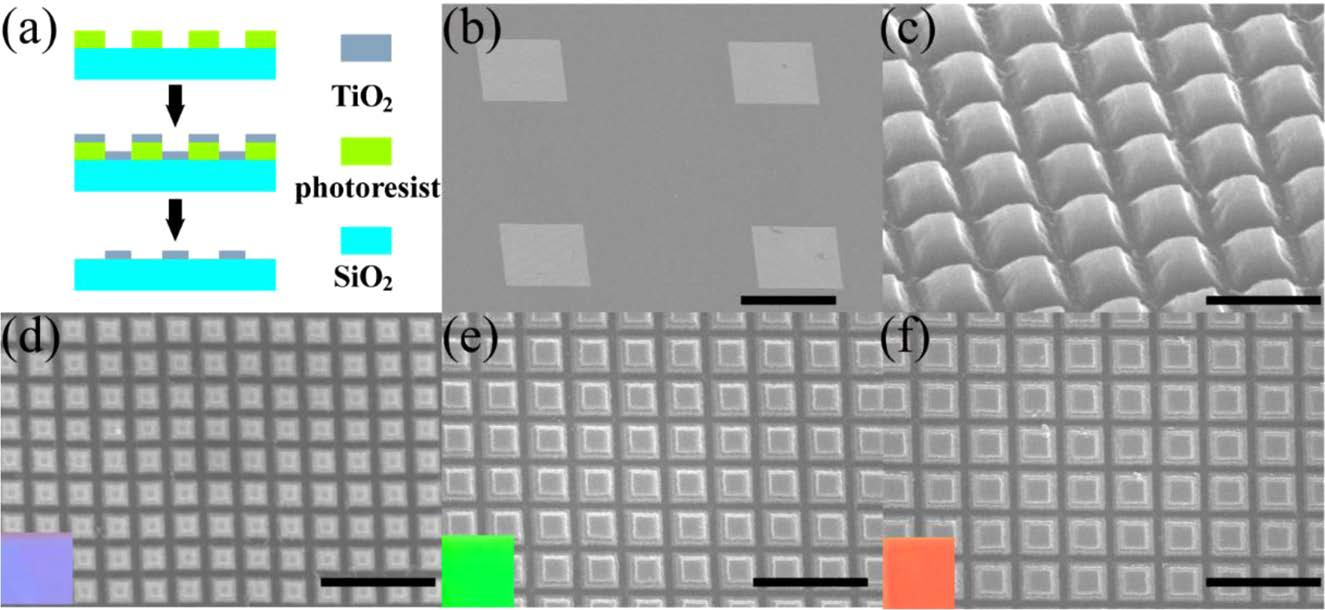Meta Materials: Optical Illusions of Structural Color

It is said that the nano- and microcosm does not have color, because the particle size is smaller than the wavelength. Accordingly, the wave properties of light, such as diffraction and interference, prevail over ordinary absorption, reflection. However, in nature there are a lot of amazing examples when color is formed due to micro-structures, such as, for example, butterflies or opal crystals.
If it took Nature millions of years of evolution to create all the variety of colors, then scientists of material scientists and physicists over the past several decades have learned to literally “synthesize” colors in the laboratory. For the achievements of science in the field of meta-materials and color, but colorless microstructures, welcome under the cat!
Instead of the preface
And what is a meta-material? Metamaterial is such a material, whose properties are caused not so much by the properties of its constituent components, but primarily by how these components are located relative to each other in space, in other words, by artificially created periodicity.
Below is an overview of three interesting, in my opinion, works recently published in first-class scientific journals. All of them are devoted to the creation of metamaterials from various materials, both classical and exotic.
Classic genre: metal nanoparticles and plasmon resonance
Many metals in the nanodispersed state (read, nanoparticles) have a so-called plasmon resonance. Simply put, collective oscillations of a “light” cloud of electrons near the “heavy” core of metal atoms under the action of light (or any other electro-magnetic wave). In more detail wrote about it here .
This property is widely known, for example, for gold, copper, aluminum and silver, and it manifests itself in the form of a peak of resonant absorption of light. When two or more of these particles are nearby, a mutual effect arises, which is expressed in the displacement of the peaks and the appearance of new ones. Thus, it is possible to “tune” the wavelength of the absorbed radiation, and accordingly, change the color of the structure consisting of such nanoparticles.
A group of Chinese scientists, together with their colleagues from Switzerland, proposed using silver disks, separated by a dielectric, aluminum oxide, as structural units for creating meta-materials.

(a) Schematic depiction of silver nanodisks on the substrate surface and the propagation of an electromagnetic wave between them. (b) Electron microscopy image of a real sample. (c) So-called plasmon modes of a separate nanodisc
Plasmon particles themselves have too wide a spectrum to use them directly to produce “pure” colors. However, the authors went to a certain trick, dividing the plasmon disks with a dielectric layer, aluminum oxide. The basic principle underlying this idea is to use hybrid modes that have a much narrower peak in the “reflection” mode and a more complete absorption in the “transmission” mode with an appropriate choice of the radius and period. Thus, by adjusting the size and spatial arrangement of the composite discs (for example, the packing pitch) inside the “pixel” of the image, you can create a full color gamut: from red to blue-violet.

The samples obtained in reflected (left) and transmitted (right) light: the first line contains optical photographs of the samples, the second line
contains the simulation data and the third line shows the experimentally obtained results . Unfortunately, the process of creating such structures is quite laborious and includes many high-tech stages. such as layer deposition, electron beam patterning and even ion etching. However, scientists are confident that this work will be another step towards creating a platform for printing using “structural” colors, as well as standards for high-precision color reproduction.

An example of the use of this technology: the abbreviations of the two universities involved in the project, “printed” by plasmon paints.
The original article “ Full Color Generation Using Silver Tandem Nanodisks ” was published in ACSNano ( DOI: 10.1021 / acsnano.6b08465 ).
Non metallic particles and surfaces
Another example of the creation of structural colors was demonstrated by scientists from the Harbin Institute of Technology (Harbin Institute of Technology) and Shanxi University (Shanxi University). Instead of metallic nanoparticles, they proposed using titanium dioxide (TiO 2 ). One of the features of this material is a rather high refractive index (> 2) compared with other materials. This property of TiO 2 , for example, is widely used to create photonic crystals ( one and two times ).
The basic idea is to isolate the desired wavelength from the spectrum using the interference of the incident and reflected rays, which gives the color to the structure. After modeling and adjusting the structure parameters and the corresponding resonance modes under the visible part of the spectrum, the researchers were able to control the color by changing the size of the structure elements.
The proposed manufacturing process of such a meta-material includes a smaller number of technologically complex processes: electron-beam lithography to create a pattern and deposition of a layer of titanium dioxide from the gas phase, followed by dissolving and removing the photoresist. Thus, the production process is simpler than for the silver nanodiscs described above, for which these steps are repeated several times.

The production process of a meta-material based on TiO 2 . (a) Diagram of the process. (bc) Micrographs of the structures obtained (low and high magnification, scale marks 100 microns and 500 nm, respectively). (df) The resulting patterns and the corresponding colors (scale mark - 1 micron)
As a result, samples were obtained that cover a significant part of the color range: there are blue, red and green shades. If we continue the comparison with plasmon particles, the TiO2-based meta-materials have demonstrated a wider color gamut.

Reflection spectra and corresponding structural colors. (a) The simulated and experimentally obtained reflection spectra of one of the meta-structures. (b) Calculated (black) and corrected (red) in accordance with CIE 1931 standard colors. (cd) Color dependence on the period of the structure obtained and the distance between neighboring pyramids.
But the authors of the work did not stop at what had been achieved. To show the applicability of the technology to create complex multi-colored images, they “painted” the coat of arms of Harbin University. Different colors and shades were used.

An example of creating images from TiO 2 meta-structures . (a) Electron microscope micrograph. Images in reflected (b) and transmitted (c) light. (d) Image in polarized light. Scale label - 159 microns
The original article " All-Dielectric Full-Color Printing with TiO 2 Metasurfaces " was published in ACSNano ( DOI: 10.1021 / acsnano.7b00415 ).
How about ordinary glass?
The latest example for today is the use of ordinary glass and not-so-ordinary physics to create meta-materials and structural colors. The main idea of this work is that you can print with the help of a “master” stamp on almost any transparent surface, including glass. Under such a stamp with a given pattern, a special gel is poured, which hardens under the action of ultraviolet and turns into a material similar to the properties of glass. This method is called nanoprinted lithography (nanoimprint lithography).

The process of making a meta-material. (a) Preparation of a “stamp” using electron-beam lithography. (bd) Various stages of the process of nanopress lithography, as a result of which the stamp pattern is “imprinted” on a smooth glass during the polymerization of a special gel. (e) Optical micrograph of the pattern obtained. (f) The profile of the “printed” pattern (the structures obtained are about 200 microns wide, and only 50-60 nanometers in height)
The structures obtained can be of the most diverse forms: straight or curved lines, voids or vice versa massive bulges. If straight lines are chosen as a pattern, then we get the usual diffraction grating, which is shown on the CDRV.
However, if we combine several similar structures into one (for example, with different periods, different thicknesses of strips, and so on) and even bend, the inscrutable magic of physics begins to work. Light falling and absorbed in some parts of the structure is transferred inside it, as inside an optical fiber, and it "comes out" to the surface in other parts.

Photos of two glass samples, the patterns of which are “tuned” to show different colors (a) or full-fledged images (b). Important! under other conditions, such as lighting, viewing angle, and so on, the image is not visible, see the video.
Thus, the colors literally "appear" only in the specified areas and at the specified angles of view. To demonstrate the effect of the authors of the work posted the appropriate video:
- Three color pixels appear together only at a certain angle (video 5 on the publisher's website and a mirror on Y.disk )
- Two completely different objects can be located at the same place depending on the angle of view (video 6 on the publisher's website and a mirror on Y.disk )
This technology, according to the authors of the work, will be able to find its application in the field of security (for example, protection of documents and data), as well as when creating displays for smart glasses.
The original article, “ Color-Selective and Versatile Light Steering with an Up-Scalable Subwavelength Planar Optics ”, is published in ACSPhotonics ( DOI: 10.1021 / acsphotonics.7b00232 ).
Instead of conclusion
Over the past 10-15 years, there has been significant progress in the field of meta-materials. Every year, scientists are trying to bring the physical abstraction to industrial development, to make meta-materials popular and to find their niche for them.
PS: Do not forget to subscribe , and write about defects in the text in the LAN.
Only registered users can participate in the survey. Sign in , please.
